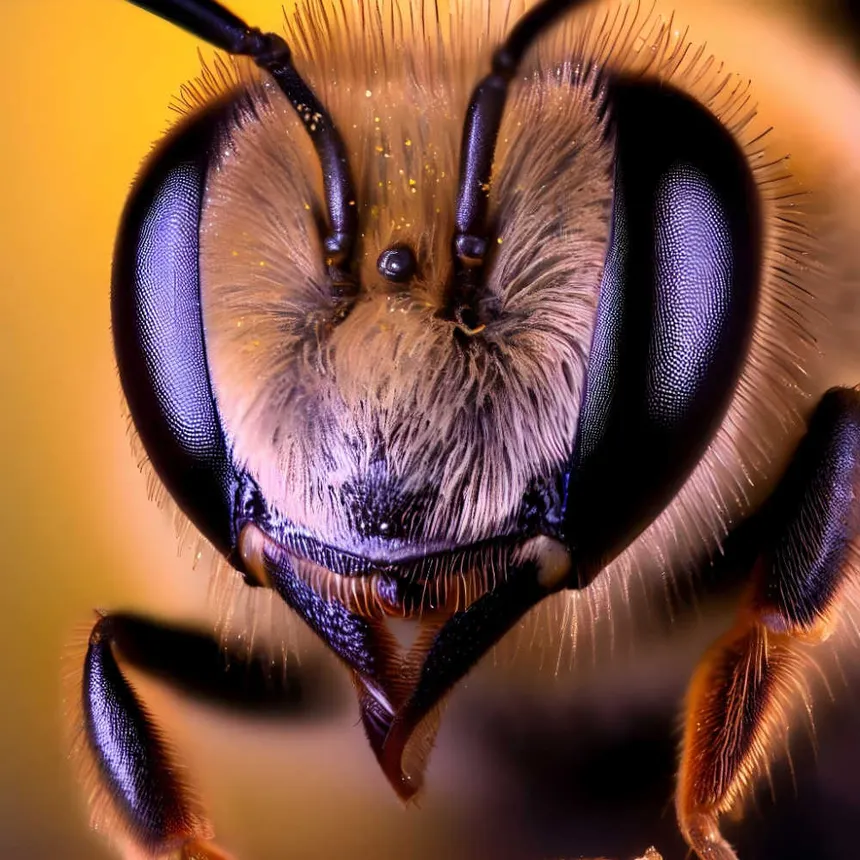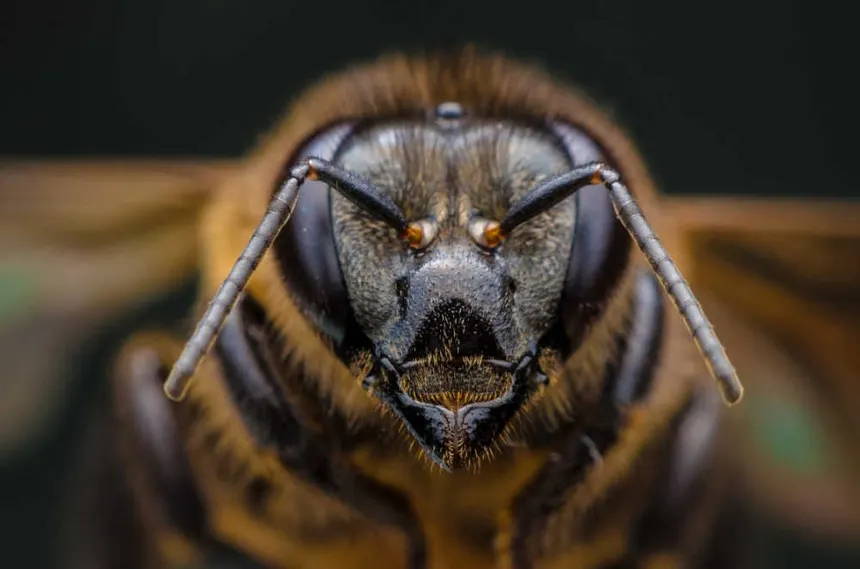The Structure Of Honey Bees Eyes

Honey bees (Apis mellifera) are not just brilliant pollinators and social insects—they also possess one of the most remarkable visual systems in the insect world. Their eyes are intricately adapted to help them navigate through flowers, find their hive, detect movement, and interpret polarized light from the sun. This article explores the fascinating structure of honey bee eyes, how they work, and what makes them so unique in the animal kingdom.
🐝 Types of Eyes in Honey Bees
Honey bees have two types of eyes, each serving different purposes:
- Compound Eyes (2 total)
- Ocelli or Simple Eyes (3 total)
Together, these five eyes provide the bee with a sophisticated system for detecting light, motion, shapes, and even the sun’s position in the sky.
👀 Compound Eyes: The Main Visual Organs
Honey bees have a pair of large compound eyes, located on either side of the head. Each compound eye is made up of around 6,900 tiny lenses called ommatidia.
✳️ Structure of Compound Eyes
- Ommatidia: Each ommatidium is a tiny visual unit with its own lens, cornea, photoreceptor cells, and pigment cells.
- The lens focuses light onto photoreceptor cells, which transmit information to the brain.
- Each ommatidium views only a small portion of the environment, but together they form a mosaic-like panoramic image.

🔍 What Can Compound Eyes See?
- Wide field of view: Bees can see almost 360°, helping them detect movement from all directions.
- Motion detection: Bees are incredibly sensitive to movement, even at very small angles.
- Color vision: Honey bees see ultraviolet (UV) light, which humans cannot. Their color vision includes:
- UV
- Blue
- Green
(They cannot see red, which appears black or gray to them.)
- Pattern recognition: Bees can recognize floral patterns and even human faces in tests.
🌞 Ocelli: The Simple Eyes
Between the compound eyes, bees have three ocelli arranged in a triangular pattern on the top of the head.
🌟 Purpose of Ocelli
- They are light-sensitive, but they do not form images.
- Help detect changes in light intensity and maintain stability in flight.
- Assist with navigation by reading the polarized light from the sky (even when the sun is hidden behind clouds).
🧠 Visual Processing in the Bee Brain
Once light is detected by either the compound eyes or the ocelli, it is sent to the optic lobes in the honey bee’s brain. Here:
- Images are processed
- Light levels are interpreted
- Navigation cues are analyzed
The bee’s brain may be small, but it’s highly specialized, especially for vision and flight coordination.
🌸 Why Bee Eyes Are Essential for Survival
Honey bees rely heavily on their eyes for daily tasks:
- Foraging: Identifying flower shapes, colors, and UV nectar guides.
- Navigation: Orienting themselves using the sun and landscape features.
- Communication: Watching the waggle dance inside the hive to find food sources.
- Predator avoidance: Detecting sudden movements to escape danger.
Their vision is so vital that even minor changes in light sensitivity (due to pesticides or disease) can seriously affect a bee’s ability to function.
🧬 Evolutionary Marvel
Over millions of years, honey bee eyes have evolved to support:
- Fast, efficient flight
- Excellent color discrimination
- Complex behavior like learning, memory, and route planning
Compared to vertebrates, bees have relatively simple eyes, yet the efficiency and adaptability of their vision remain a wonder of natural engineering.
📌 Summary
| Feature | Compound Eyes | Ocelli (Simple Eyes) |
|---|---|---|
| Number | 2 | 3 |
| Structure | Thousands of ommatidia | Single-lens receptors |
| Function | Form images, detect color and motion | Detect light intensity and direction |
| Role in behavior | Navigation, foraging, communication | Orientation and flight stability |

✨ Final Thoughts
The eyes of the honey bee are far more than simple tools for seeing—they are critical instruments that support nearly every aspect of the bee’s complex behavior. From detecting floral UV patterns to navigating miles from their hive and back, the honey bee’s multi-eyed system is a finely tuned visual network that continues to amaze scientists and nature lovers alike.



